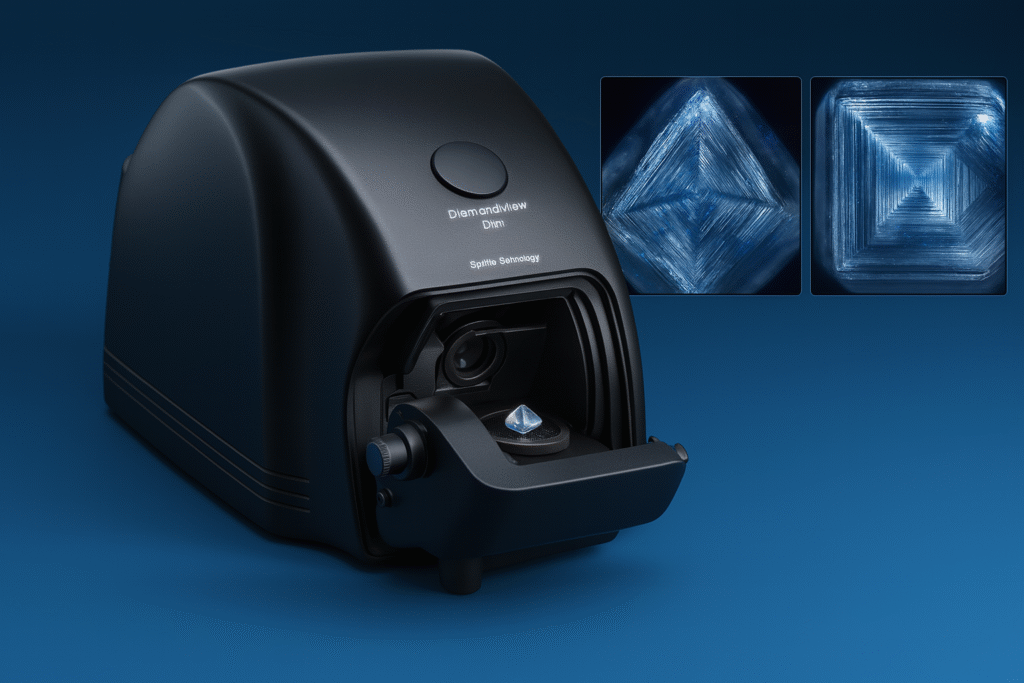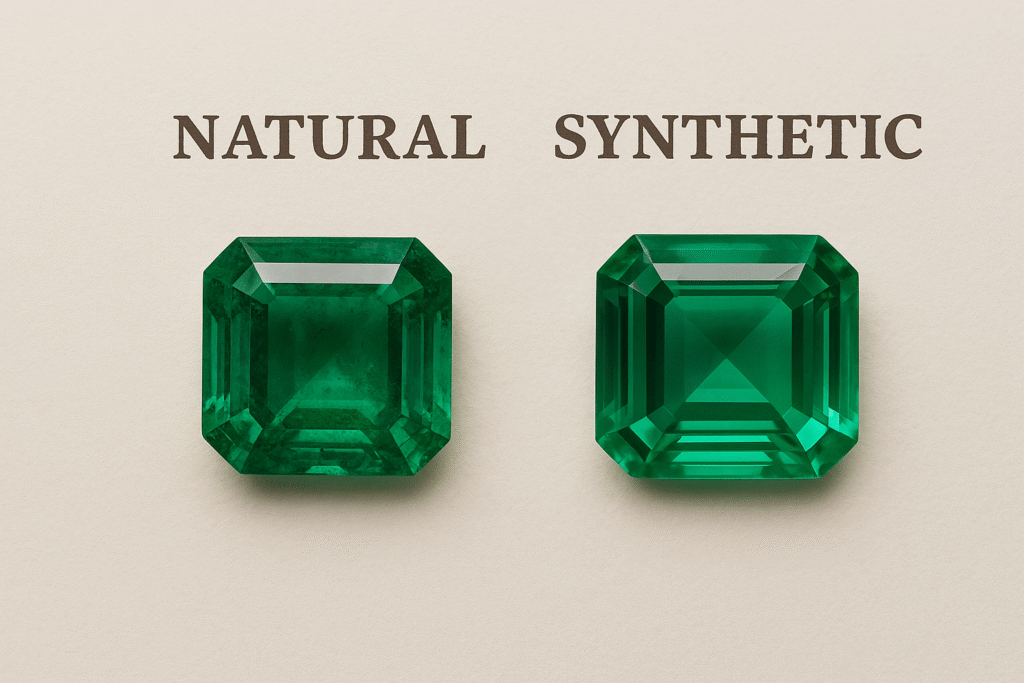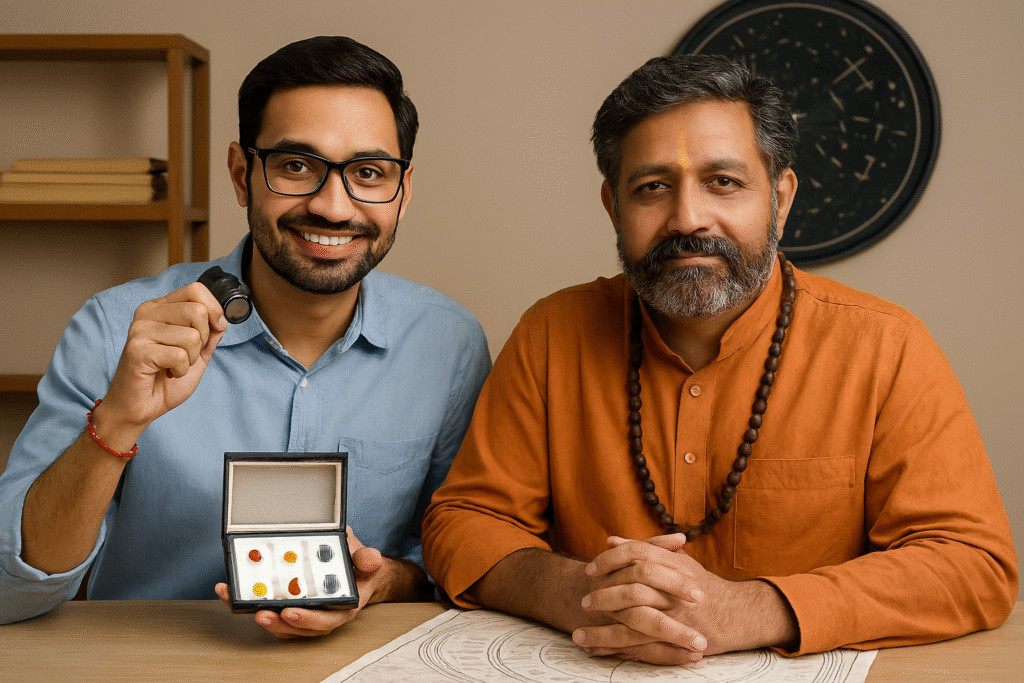Table of Contents
- Introduction
- How DiamondView Zoom Verification Works
- Who Should Use the DiamondView Verification Tool
- Benefits and Features of DiamondView Verification
- FAQs About DiamondView Zoom Verification
Introduction
DiamondView Zoom verification is the most reliable method by De Beers to determine whether a diamond is natural or laboratory grown. Using shortwave ultraviolet light, this device captures fluorescence patterns on the diamond surface, showing if a diamond is natural or a CVD/HPHT lab-grown diamond. Research confirms 0% false positives for natural diamonds. Wholesale dealers, gemological laboratories, and jewelry businesses rely on DiamondView Zoom verification for fast, accurate diamond authenticity testing.
How the DiamondView™ Zoom Verification Works
- Illuminate the diamond with shortwave UV light.
- Fluorescence patterns are captured using an UltraXGA USB 3.0 camera.
- Software highlights growth features to determine origin: natural, CVD, or HPHT lab-grown.
- Works on diamonds from 0.01–10 carats, including colorless and fancy-colored stones.
- Provides quick and conclusive analysis, suitable for high-volume testing.
See also: Natural Diamond Council
Who Should Use This Diamond Verification Tool
- Wholesale dealers of loose diamonds
- Gemological and research laboratories
- Retailers verifying diamonds flagged by screening devices
- Jewelry businesses testing simple mounted pieces such as rings or earrings
Further reading: Gold Buying Checklist for Malayalis
Benefits and Features of DiamondView Verification
- Accurate verification of natural vs lab-grown diamonds
- Detects CVD and HPHT lab-grown diamonds
- Works on all diamond colors and cuts
- NDC Assure certified with 0% false positives
- Optional user training available
- 1-year parts and service warranty
- Replaceable emission filters highlight growth features
- Suitable for both loose diamonds and simple jewelry
FAQs About About DiamondView Zoom Verification
Q1: Can mounted jewelry be tested?
Yes, simple rings and earrings can be verified.
Q2: What size range does it cover?
From 0.01 to 10 carats, covering melee to large diamonds.
Q3: Who benefits most from this tool?
Wholesale traders, gem labs, and retailers verifying diamond authenticity.
Small Luxury Hotels FAQ
Introduction
This small luxury hotels FAQ answers common questions about boutique stays. It explains definitions, differences with large chains, and which services to expect. In addition, it covers family options, sustainability, and tips on finding the right property.
What defines a small luxury hotel?
- Fewer than 100 rooms.
- Personalized attention and privacy.
- Strong links to local design.
- Locations in unique urban or rural areas.
As a result, travelers often choose them for a more intimate experience. Moreover, their distinctive style sets them apart from standardized hotels.
Why choose a small luxury hotel?
Personal service
Staff remember guest details, therefore creating a sense of familiarity.
Calm spaces
Unlike large hotels, these properties feel quieter, so you can relax more easily.
Local culture
For example, menus highlight regional produce, and interiors reflect local crafts.
In addition, many guests return because the experience feels authentic.
How do small luxury hotels differ from large chains?
Guest experience
Small hotels provide tailored attention, while chains rely on uniform systems.
Property identity
Each boutique hotel has its own theme. On the other hand, large chains repeat formats worldwide.
Dining approach
Menus change seasonally and locally. Therefore, guests enjoy fresh variety instead of standard global menus.
Are small luxury hotels only for leisure stays?
Business features
- Lounges double as meeting rooms.
- Private dining options support work dinners.
Digital needs
- Fast Wi-Fi supports remote work.
- Quiet spaces help concentration.
Because of these advantages, small luxury hotels appeal to both business and leisure travelers.
What services can you expect?
- Concierge services for tours and dining.
- Fine dining menus with seasonal ingredients.
- Spa and wellness treatments.
- Added extras like minibars and welcome gifts.
Moreover, services shift depending on location. For example, a city hotel might offer cultural tours, while a rural retreat offers farm experiences.
Are small luxury hotels family-friendly?
Options for families
- Connecting rooms for parents and children.
- Child-friendly amenities such as menus or games.
Adults-only stays
- Some properties focus on privacy.
- Guests find peaceful, child-free environments.
Therefore, always check booking policies, because each hotel sets its own approach.
Do these hotels support sustainability?
Sourcing and dining
Farm-to-table meals reduce transport impact. In addition, guests enjoy fresher produce.
Environmental focus
Plastic use is restricted, while refillable bottles are encouraged. Smart energy systems reduce wastage.
Local involvement
Hotels support the community by hiring regionally. As a result, growth extends beyond the property.
How do you find the right small luxury hotel?
Define needs
Decide if food, spa, culture, or privacy is your top priority.
Check guest feedback
For example, repeat reviews about service often signal consistency.
Compare value
Packages may include meals, transfers, or early check-in. Therefore, higher prices can still deliver stronger value.
Are small luxury hotels worth the price?
Value of service
Guests pay for attention, comfort, and privacy. Moreover, experiences feel tailored and unique.
Extras add value
Some hotels include exclusive experiences or benefits. Finally, weigh these extras against nightly rates.
As a result, many travelers feel these hotels justify their price when quality matters most.
- Family Fun Magnify glass: Not suitable for professional serious biologists. This electronic microscope is a very interes…
- Mini Magnifier Microscope: 2 million pixels, 1080P HD picture quality for smartphone, 720P for computer, The built-in 8 …
- Wifi & USB Function: App Provided. This cell phone microscope can not only connect to your smartphone via wifi function …




